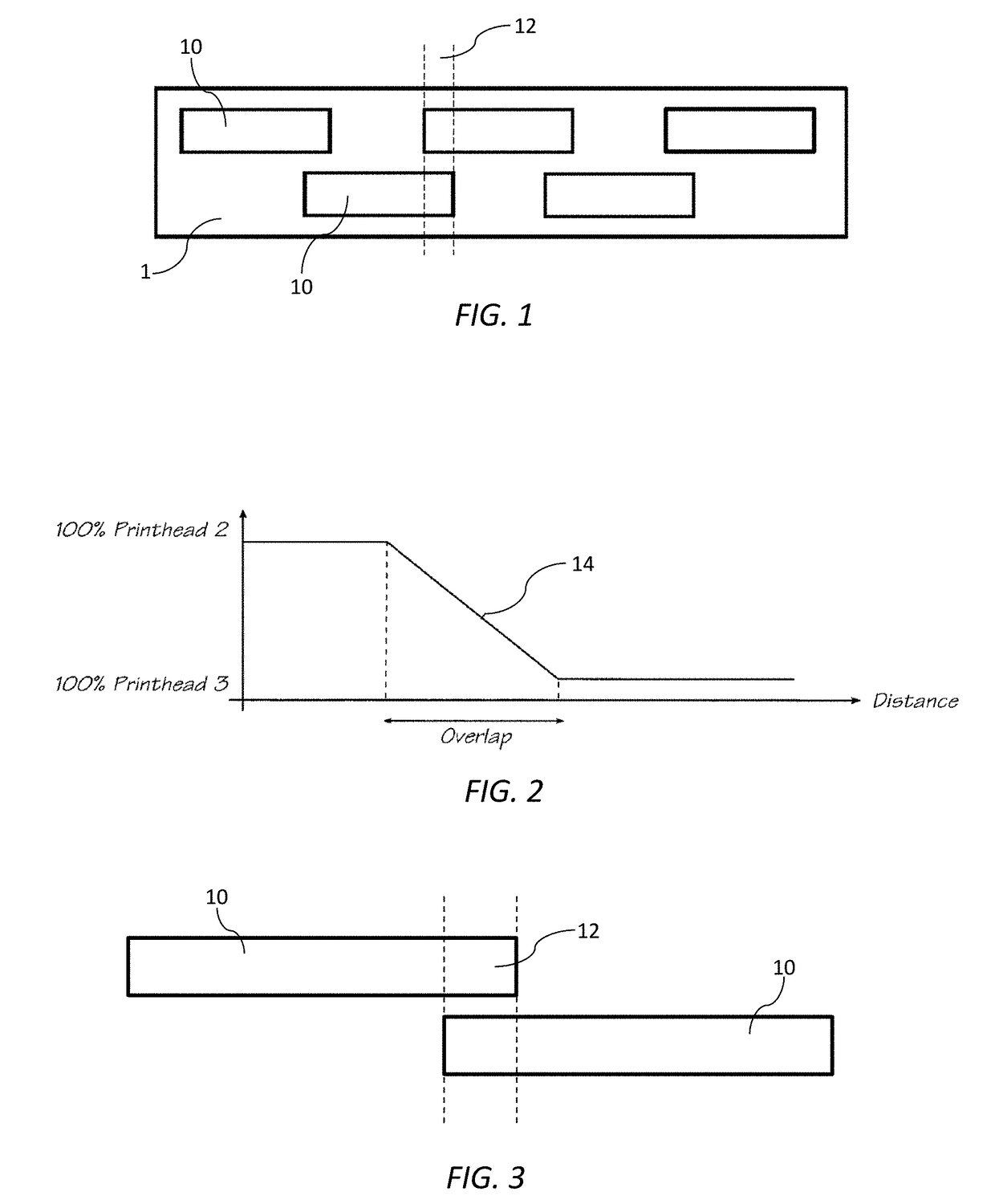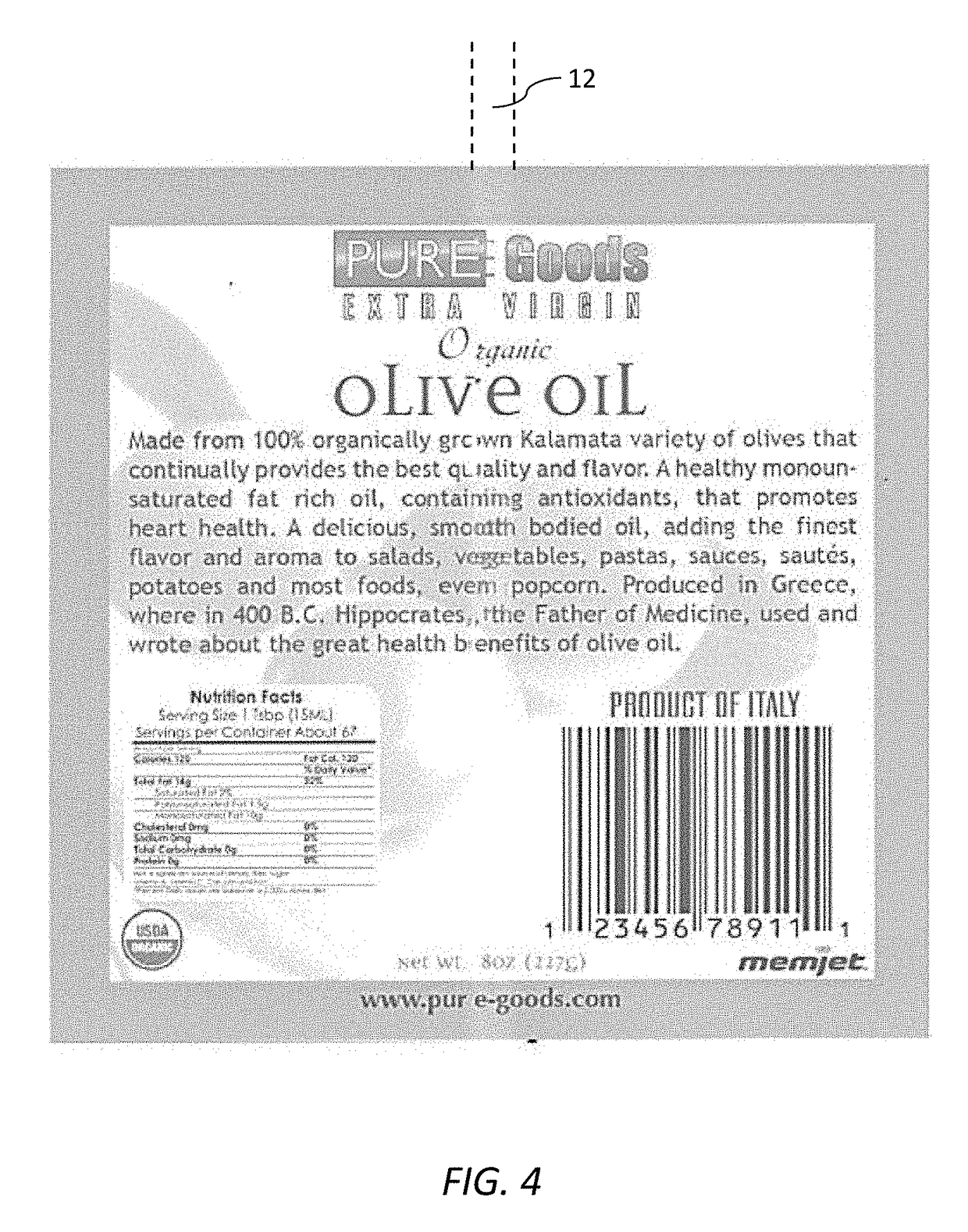Method of minimizing stitching artifacts for overlapping printhead segments
- Summary
- Abstract
- Description
- Claims
- Application Information
AI Technical Summary
Benefits of technology
Problems solved by technology
Method used
Image
Examples
Embodiment Construction
[0092]Referring to FIG. 1, there is shown schematically a print bar 1 comprising a fixed array of five overlapping printhead segments. Each printhead segment takes the form of an elongate inkjet printhead 10 (e.g. A4-sized printhead) having rows of nozzles (not shown) for ejection of ink. In FIG. 1, the five printheads are nominally designated Printhead 1, Printhead 2, Printhead 3 etc from left to right. In the print bar 1 shown in FIG. 1, the printheads 10 are all monochrome printheads, although it will be appreciated that multi-color printheads are, of course, with the ambit of the present disclosure.
[0093]Neighbouring overlapping printheads 10 have an overlap region 12 whereby nozzles from either of the overlapping printheads may be used to print a strip of an image corresponding to the overlap region. In these overlap regions 12, the neighbouring printheads 10 must be stitched together to avoid discontinuities in the printed image.
[0094]One prior art stitching method (known in t...
PUM
 Login to View More
Login to View More Abstract
Description
Claims
Application Information
 Login to View More
Login to View More - R&D
- Intellectual Property
- Life Sciences
- Materials
- Tech Scout
- Unparalleled Data Quality
- Higher Quality Content
- 60% Fewer Hallucinations
Browse by: Latest US Patents, China's latest patents, Technical Efficacy Thesaurus, Application Domain, Technology Topic, Popular Technical Reports.
© 2025 PatSnap. All rights reserved.Legal|Privacy policy|Modern Slavery Act Transparency Statement|Sitemap|About US| Contact US: help@patsnap.com



